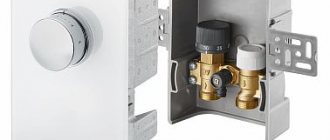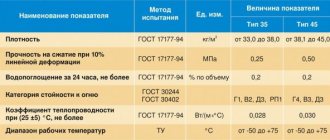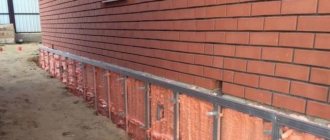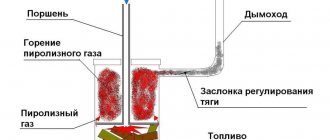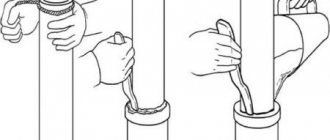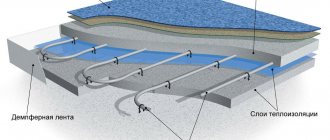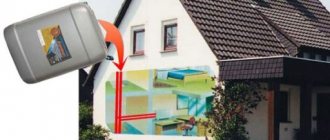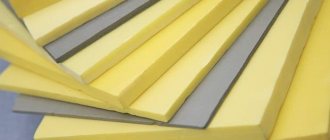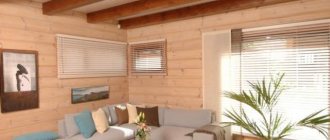PRODUCTION TO ORDER!
Measurement surveyor's visit is FREE*
*Across St. Petersburg and the region. When traveling to other regions, please contact our managers
Design project FREE**
**For more information, please contact managers
We provide a FREE sample***
***For more information, please contact managers
You can order on favorable terms and buy at a low price any foam façade corner elements developed by our engineers.
PHOTOS OF OUR PROJECTS
Why with us?
COMFORTABLE
- Own production
Modern equipment and several production lines - Own design department
Experienced designers and engineers will develop a design project from scratch
- Fast reaction
The first delivery of facade decor to the site can be in as little as 5 days!
RELIABLE
- Time-tested experience
Over 9 years of work, we have implemented more than 3,000 projects! - Proven quality
Protective coating from 2 to 5 mm thick
- Clients return to us
We implement fundamentally honest cooperation!
PROFITABLE
- A deferred payment is possible.
We can afford this, being aware of the risks! - We comply with agreements
We fulfill what is stated in the contract 100%
- Loyalty program
We will provide a discount for serial customers!
How to choose material
For the manufacture of window decor, various types of materials are used, differing in varying degrees of practicality. Wood and natural stone are traditional options, but in modern construction preference is given to more convenient and cost-effective polystyrene foam, polyurethane and brick.
The strict charm of the classics Source quantum-spb.rf
See also: Catalog of companies that specialize in finishing materials and related work
Polyurethane foam (PPU)
Polyurethane decor has a presentable appearance and has the following properties:
- Provides simple and quick installation due to its low weight.
- Products made from architectural polyurethane foam are resistant to the acidity of atmospheric precipitation, which is why stone, metal and plaster parts often suffer.
- Polyurethane products are manufactured using injection molding. They have an impeccable appearance, but the variety is limited by the number of forms available from a particular manufacturer.
- Products made from polyurethane foam are coated with a layer of dye to protect them from the damaging effects of ultraviolet radiation.
- The material has very low thermal conductivity and good adhesion, therefore it reliably insulates joints. However, over time it shrinks, and quite noticeable gaps appear between the joints (sometimes 4-5 mm). Therefore, polyurethane foam on the facade is becoming less and less common.
A. Blok's estate, platbands with a simple profile and brick Source insales.ru
Stone and brick
Stone decor is a spectacular, but expensive way to decorate windows. Stone is difficult to install, and it also increases the load on the walls and foundation. If repairs are required in the future, they will be complex and costly.
Brick framing is more practical; it looks harmonious in the design of both brick and many other projects. This finish retains its appearance despite the sun, frost and rain. A window framed with brick looks cozy and elegant; it is a reliable and long-term solution.
The disadvantage of brick decor is its high cost, relatively small selection of options and labor costs during cladding.
Stone and brick in window cladding Source pinimg.com
Gypsum
Contrary to popular belief, the cornices on historical buildings were made not of gypsum, but of plaster. They were made on site using special templates from roofing iron.
Modern decor made from architectural plaster is more often found in interior design than in façade design; in this case, both cast gypsum and gypsum broach can be used. The reason for the limitation is the instability of the natural material to temperature fluctuations and moisture.
To decorate a window opening with plaster decor, you must first impregnate the products with hydrophobic compounds. Significant weight, fragility and fairly high cost also do not speak in favor of gypsum.
Assembly window cladding Source insales.ru
Expanded polystyrene (foam plastic) without coating
The material has many attractive qualities. It is lightweight, easy to install and inexpensive when compared to its competitors. However, its strength leaves much to be desired - it is less reliable than polyurethane foam, and complex terrains cannot be created from it.
The most budget option is polystyrene foam decor without a reinforcing (protective) coating. It is ordered quite often and is reinforced on site. However, fiberglass mesh reinforcement over foam plastic is not suitable for complex profiled products, and the work itself is quite labor-intensive. If the reinforcement is done correctly, the products will last 10-12 years.
Such a solution is appropriate in cases where low weight and low cost are important, and detailing fades into the background. Some manufacturers cut out sample profiles for on-site fitting. The service is inexpensive and very convenient, as it helps you evaluate the results live.
Foam plastic trim on the facade Source insales.ru
Advantages of façade foam plastic for building decoration
The current facades of buildings are created using elements made from high-quality reinforced polystyrene foam. For increased strength, the products are coated with a mastic coating in 3 layers. The foam facade of houses has many advantages:
- high level of resistance to adverse atmospheric events;
- Possibility of painting in any color;
- affordable price;
- safety for the life and health of others.
Facade foam plastic is lightweight, so the parts are easily transported, and if they fall off the outer walls, roofing structures do not pose a traumatic threat to humans and animals.
Types of decorating elements and rules for their installation
As can be seen in the photo, there are quite a lot of elements that serve as decoration for the facade. The common names are:
- Basement cornice - this horizontal strip projection is located at the bottom along the entire perimeter of the house.
- The base of the column, the trunk, the capital are the lower part, the middle and the top, respectively.
- Baluster is a stair railing element installed vertically.
- Sandrik - decor above the window.
- Molding is a cornice between floors.
- Rusts are linings in the form of rectangles at the corners of the house.
- Bracket - a window sill element in the form of a support.
- Arch – frames for rounded windows and doors.
House architecture elements - Castle – imitation of a stone (castle) at the top of the arch.
- A pilaster is a projection of a wall, as if continuing a column.
- Platband - window surround.
- Frieze - a strip bordering the decoration of the facade.
- The panel is a narrow linear framing element.
- The socket is a round cover.
- The pattern is a three-dimensional ornament.
To install polystyrene foam decor with your own hands, you need to adhere to the following rules:
- Walls, window sills, jambs and cornices, that is, all surfaces on which polystyrene foam will be attached will need to be carefully leveled. For this purpose, facade plaster is used.
- Next, you should wait until all treated surfaces are completely dry. This usually takes about 2 days.
- Perform markings using a level and plumb line.
- Fix the polystyrene foam to the base. Mounting adhesive or foam is applied to the back side. The prepared element is pressed forcefully to the intended location. In this case, you need to leave a 2-3 mm gap between adjacent parts.
Advice. To prevent the decor from slipping on the glue, wooden strips can be temporarily attached to the bottom side.
- After 3 days, when the polystyrene foam sticks well, the parts are additionally secured with dowels.
- The joints are filled with a compound designed to seal the seams. Leave it to dry for several days.
- At the end of installation, the decorative elements are primed and painted.
Decor made of polystyrene foam is an ideal option for upgrading the facade. From a financial point of view, this is not at all expensive, and the work of attaching the decor can easily be done by yourself.
For whom do we offer a beautiful polystyrene foam façade?
The modern façade of a building made of polystyrene foam is successfully and tastefully transformed by products of variously complex shapes, which are combinations of straight, broken, and wavy lines, which overall give a single, unique figure. Each artistic element is a component of brackets, platbands, columns, sandriks, emphasizing the stylish outlines of windows, door and roof structures.
The beautiful foam facade of the building is widely used for decoration and restoration of urban ensembles, including:
- temples, cathedrals, churches, monasteries;
- mansions, pavilions, houses of culture and creativity;
- libraries, institutes, academies, universities.
It is now possible to bring architectural and historical monuments into a well-groomed and presentable condition within a short time at minimal cost. Decorative facades of houses made from modern high-tech inexpensive materials are an art accessible to everyone.
What do we offer for decorative house facades?
At the request of the customer, if a sketch is available, we can produce decorative products of any shape that effectively emphasize the aesthetic individuality of the house. Unlike breakable elements made of ceramics, plaster, or crumbling stone, affordable polystyrene foam or expanded polystyrene are excellent for making many decorative elements:
- pilaster; platbands;
- window sills; brackets;
- slopes; balustrades;
- columns; pommel.
Foam elements are lightweight, making them easy to transport. The production of decorative facade elements is carried out so that temples, cathedrals, universities, country mansions, and museums sparkle with new stylistic motifs.
We will produce any facade elements from foam plastic for finishing and restoration of facades, both for government and culturally significant objects, and buildings with modern architecture.
Installation of foam decor
After the preparatory work is completed, you should begin attaching the elements. Glue is used for installation. But if the decor is long or a little weighty, dowels are used as additional fastening.
You can only use glue, but fasteners alone will not work. It will not be able to tightly fix a certain area, and the entire structure will not look neat. And during operation, problems will appear (rainwater flowing under the decor, wind damage, etc.).
So let's start installation:
- Glue is applied to the entire surface of the decorative element.
- The decor is pressed against the wall and held for several seconds. This will allow the glue to adhere well to both the wall and the foam decor.
- You need to monitor the pressing force. If you press too hard, you may damage the element.
- When an element needs to be fixed with a dowel, this is done only after the glue has dried.
- After all the decor is installed, you need to seal the joints and places where the dowels are installed with sealant.
